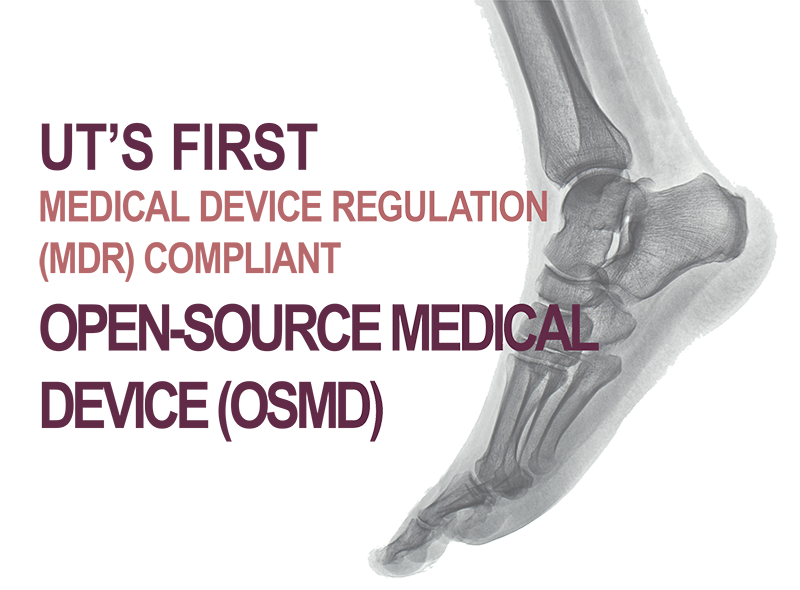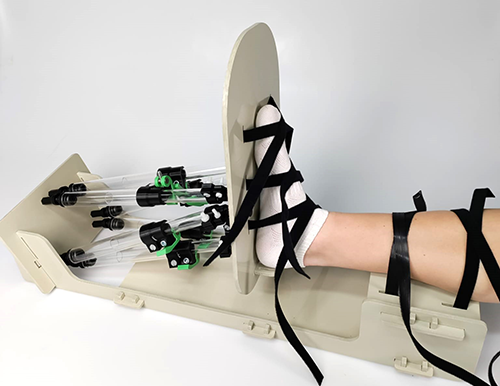
Medical devices can take a long time to finally enter the market to allow the intended users being medical professionals and/or patients to benefit from their functionality. The process covers a mixture of complying to the Medical Device Regulation to ensure safety and clinical benefit of the medical device and developing a business case including reimbursement and sales strategy. The latter is not a straightforward task as the users are most often not the buyers of the medical device.
Medical Device Innovation
With the stricter Medical Device Regulation, an extra hurdle is put to new medical devices developed for small patient populations or rare medical cases to enter the market. Due to the increased development costs for these cases, it is difficult to generate a sustainable business case as the low sales volumes do not offer return on investment. As a result, such innovative medical devices will not reach the intended users that could benefit from it. Within the chair Biomedical Device Design & Production at the University of Twente, we investigate alternative routes to offer these medical devices as open-source medical device with complementary medical device regulation documentation (including tests to show the compliance). This would allow the intended users to manufacture and assemble these devices at cost price and lower the burden of documentation and hopefully contribute to the introduction of these novel medical devices to assist clinical practice.
An example of a commercially nonviable medical device is a 3D foot plate, which is an assistive device for medical imaging of complex hindfoot pathology, classified as Medical Device Class I. The 3D foot plate allows the patients’ foot to be positioned relative to the lower leg with this mimicking clinical stress test while recording CT-images. From the CT-images quantitative data can be derived that are indicative of the pathology, or that assess the quality of a certain surgical procedure. This request for detailed quantitative data has been posed by expert foot and ankle surgeons from the Academic University Medical Centre and Maastricht University Medical Centre. Due to its relevant application for the small patient population with complex hindfoot pathology which are primarily seen in academic medical centers, no business case can be made.
Accessibility
To ensure that clinicians and indirectly patients can benefit from the 3D foot plate, we redesigned the original version using the design for assembly method to an IKEA-style prototype, that can be manufactured using laser cutting, 3D printing, off-the-shelf components and basic hand tools for assembly. This is to ensure low manufacturing costs and minimize risks. Subsequently, we set up the full Medical Device Regulation documentation using templates from the University of Twente including a risk analysis, mitigating strategies, evaluation tests, an IKEA-style manual, and the technical dossier files. The entire package of bill of materials, technical drawings and the Medical Device Regulation documentation of the 3D foot plate will be offered on an opensource platform as an open-source medical device.

The 3D foot plate can then be produced against cost price, and the Medical Device Regulation documentation can be downloaded and adjusted to fit in the quality management system of the academic medical center that aims to use the medical device. In the end, by offering this medical device without business case via an open source hardware platform, patients with complex problems in the hindfoot can benefit by improved diagnosis and treatment. The 3D foot plate is our first open-source medical device. The chair Biomedical Device Design & Production continues to gather additional cases and further develop a design strategy for these Medical Device Class I devices.
Furthermore, we aim to offer them as open-source to stimulate this alternative route and contribute to improving healthcare. The target users are not only based in the Netherlands, but due to their accessibility, open-source hardware platforms offer the possibility for collaborations in low- and middle income settings, which contributes to the impact of this initiative.
